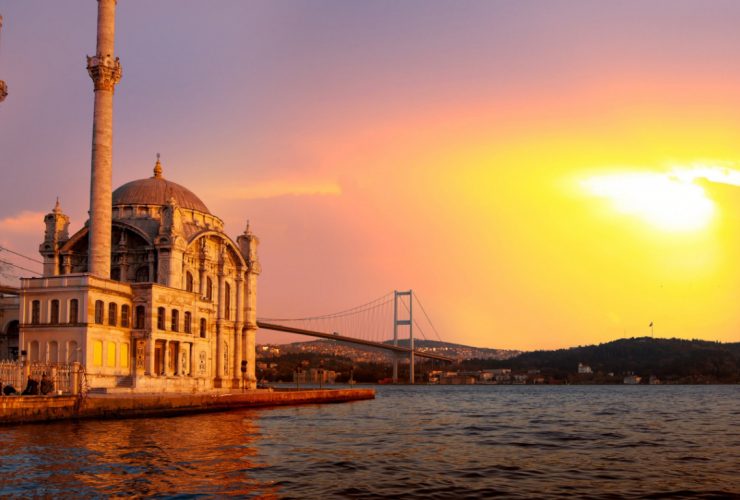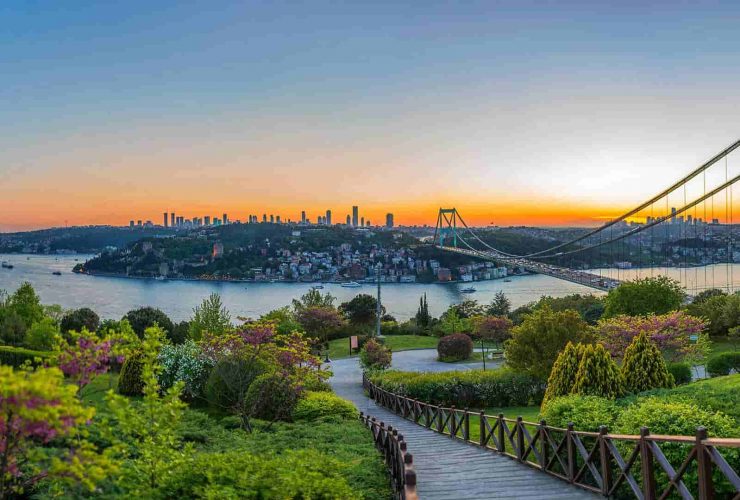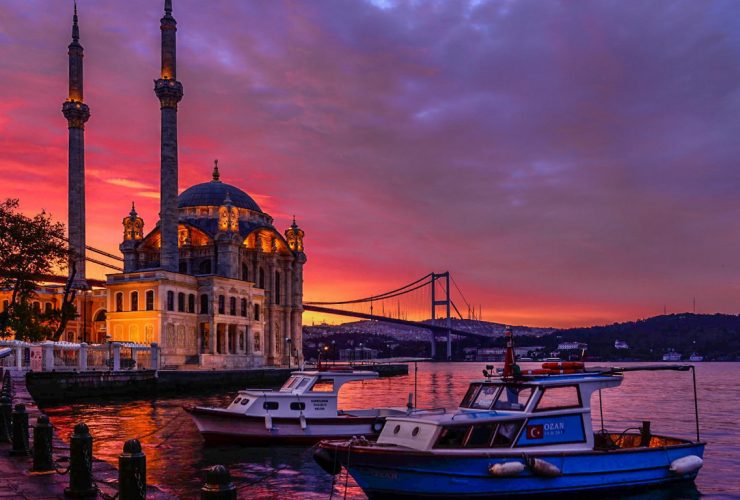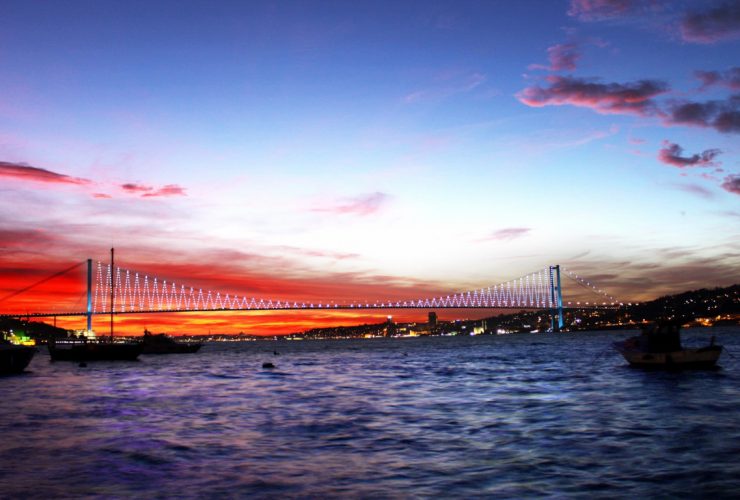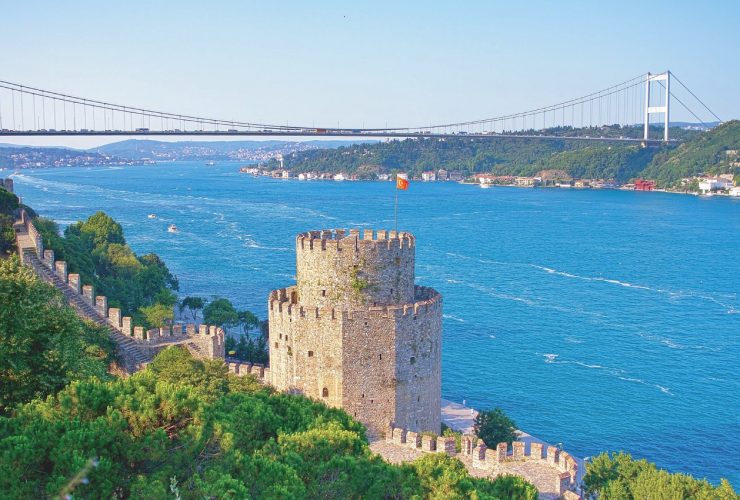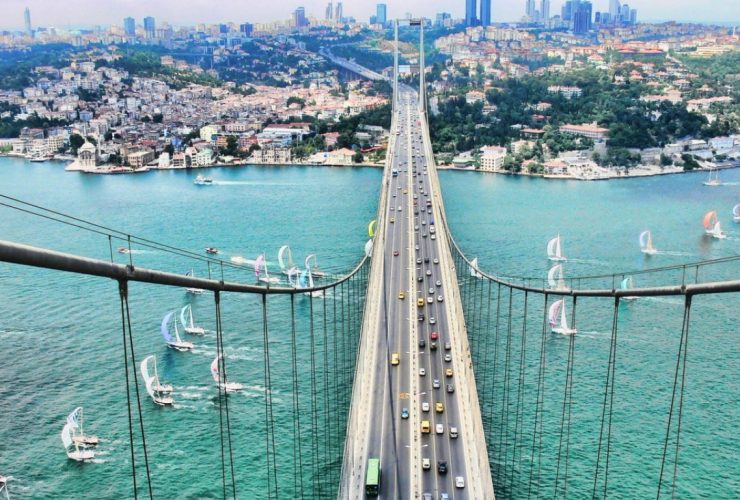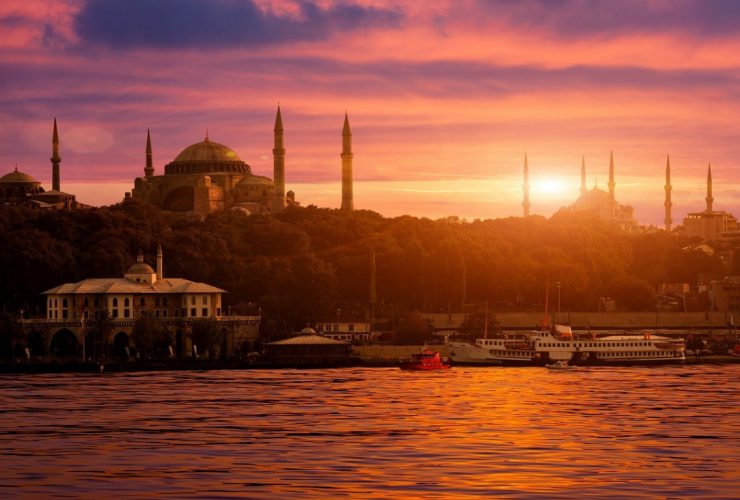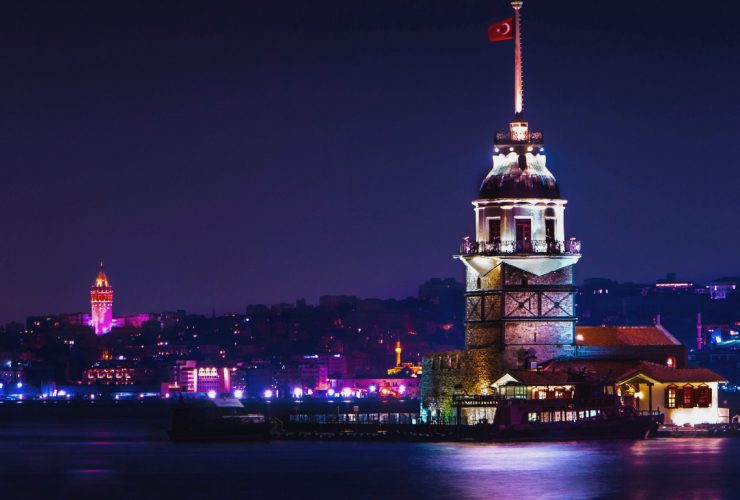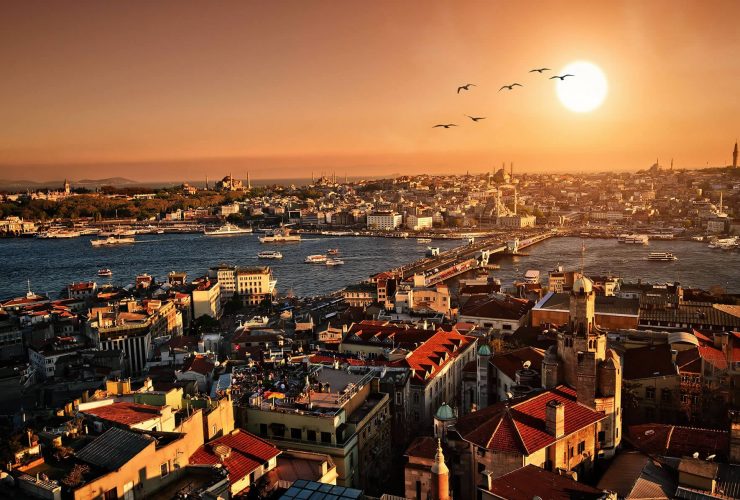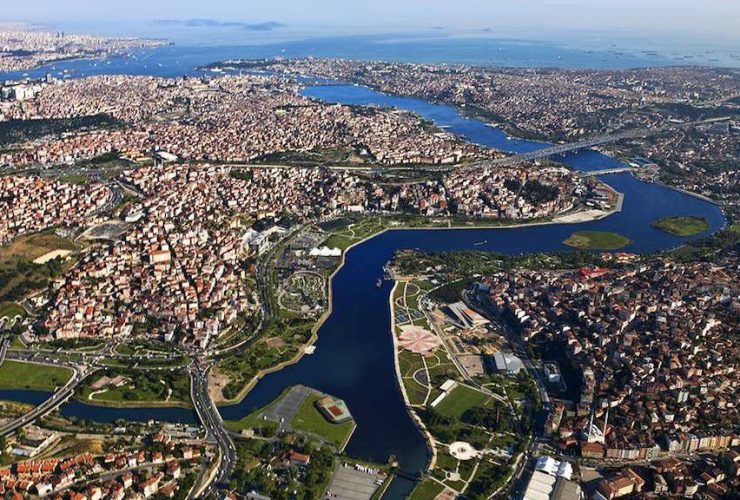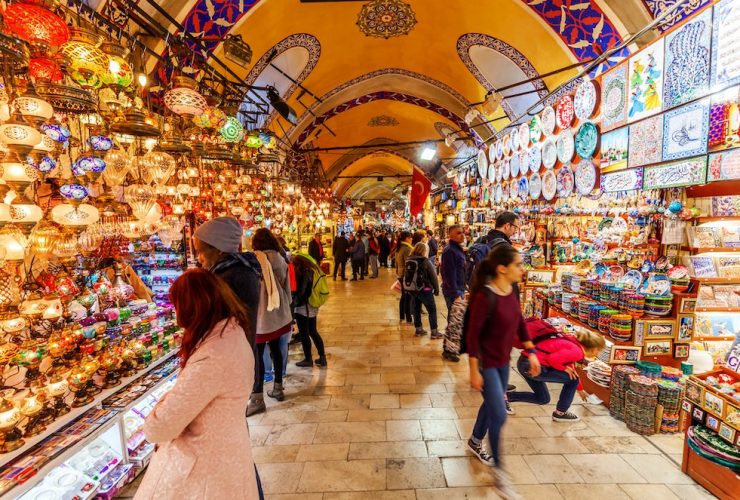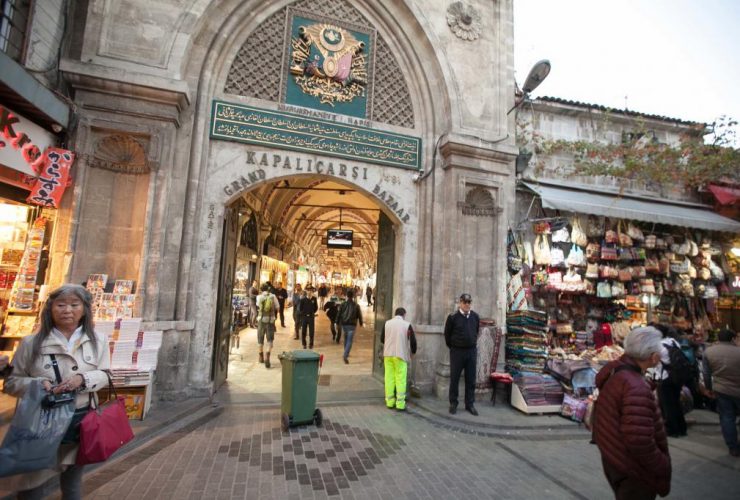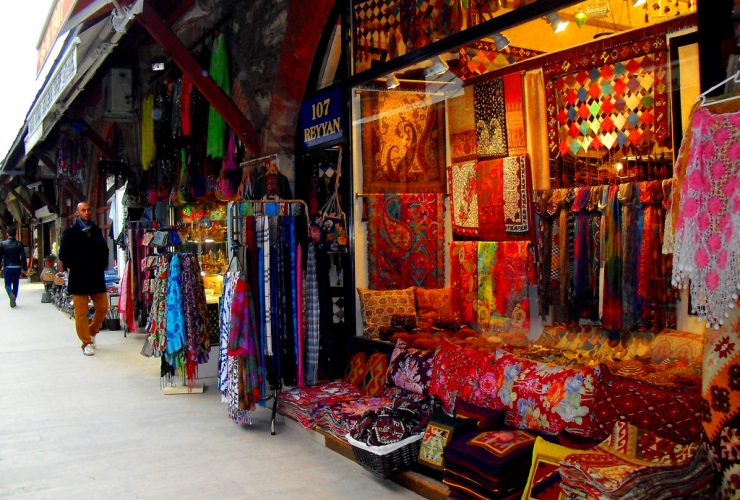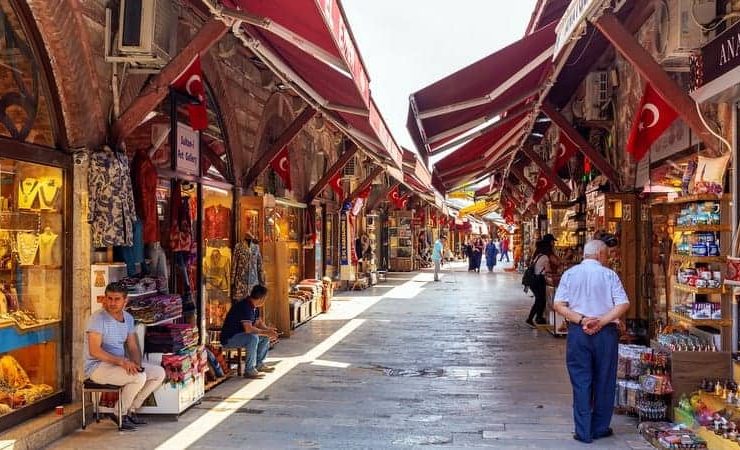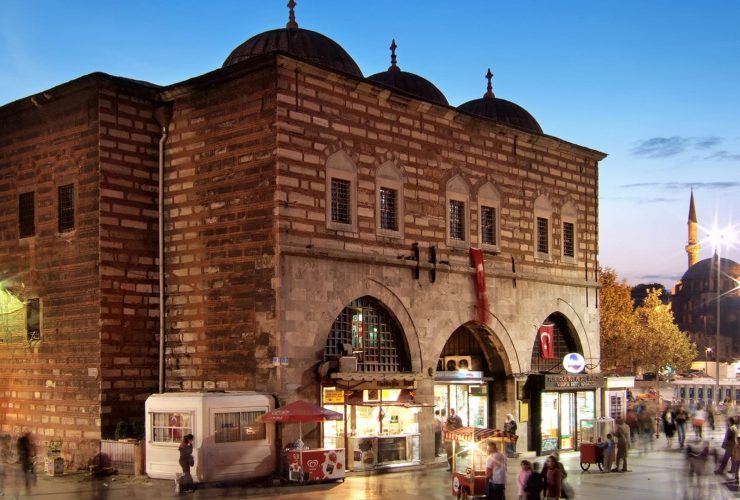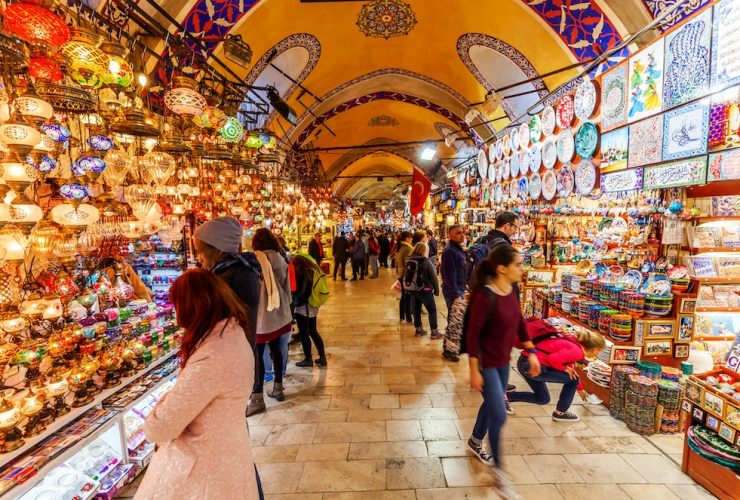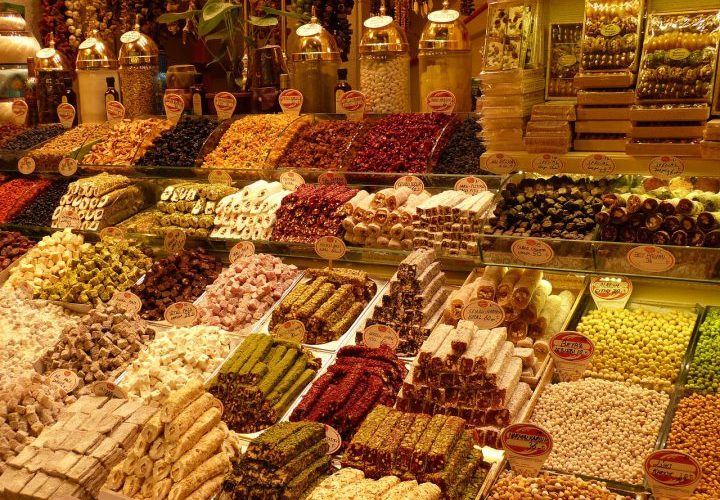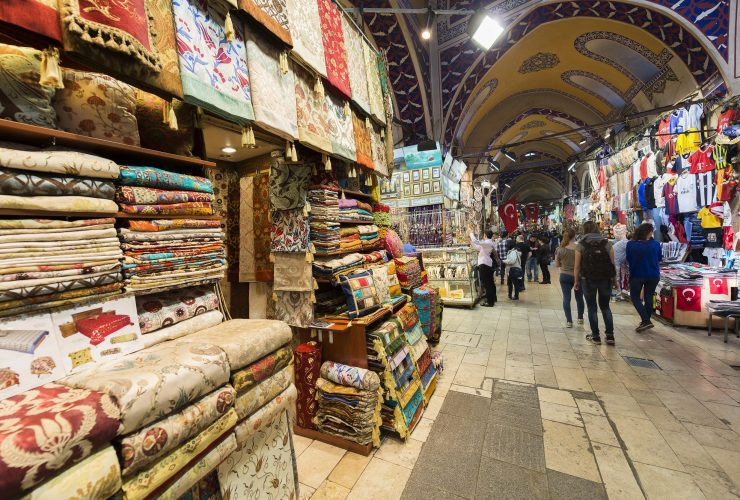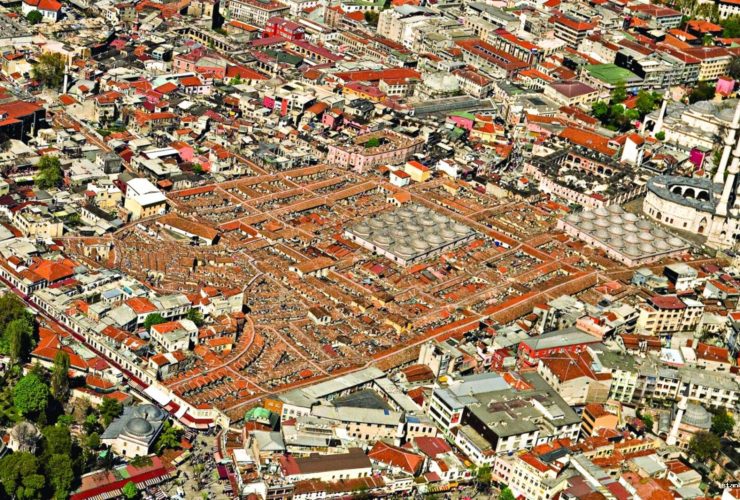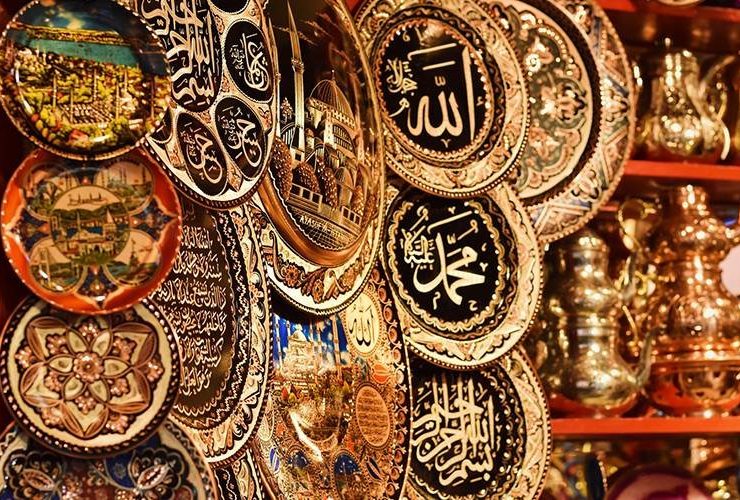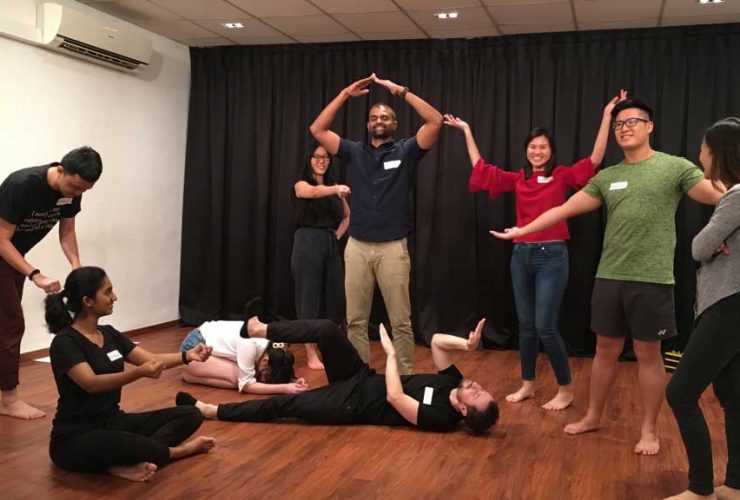İstanbul, the bustling metropolis of Türkiye, is a city full of charm, where the past goes hand in hand with the present and every step brings to light a relic of times gone by. At the crossroads of two continents – Europe and Asia – this spectacular city has absorbed the best of both worlds.With its beautiful historic landmarks, quintessential cuisine, vibrant nightlife, festivals of art and music, celebration of faith, labyrinths of marketplaces and shopping arcades, the beating heart of İstanbul, and the soul of Bosphorus under the watchful eye of the Maiden’s Tower is a traveller’s dream.
İstanbul’s Historic Peninsula
The magnificent city of İstanbul has always attracted people from all over the world due to its strategic location and wonderful heritage, marked by significant monuments, diverse traditions and cultures, and authentic cuisine. İstanbul gains much of the tourists’ and travellers’ attention and fascination from its historical peninsula, also known as Suriçi (Walled City). It was founded as a residential area and was the capital of two empires Eastern Roman and Ottoman Empire that once ruled 4 continents The epitome of tourist attractions, the historic peninsula of İstanbul is enclosed by the ancient city walls on one side and the Bosphorus, Sea of Marmara, and the Golden Horn on the other. When wandering through the neighbourhoods of İstanbul’s peninsula and seeing a wealth of Eastern Roman ruins and Ottoman artefacts, you will feel the scent of history as if you have travelled back in a time machine. It is indeed the varied history of this peninsula, along with its unique integration of architectural icons, that makes the old city of İstanbul a memorable place to visit.

Galata Tower
Our approved courses in Istanbul
Enhancing Language Learning through ICT
Cultural Heritage: Istanbul
Beyoglu
Beyoğlu has been ever present as a vibrant, rich cultural hotspot, and a fan favourite location for many visitors all over the world. A popular hive of activity that stretches for over 1 km. And now with some fabulous new developments, visitors and tourists will be taken on a wonderful journey of connection from the old to the new of important landmarks, places of interest across the district. An unmissable experience awaits starting from the newly developed Galataport, taking you through the depths of the narrow streets of Karaköy and beyond, through the charm and simplicity and sophistication of İstiklal Caddesi and gradually winding up to the innovative and newly transformed Taksim Square.
Where İstanbul Unwinds
Beyoğlu is a true symphony of culture when East meets West and the pulsating heartbeat of İstanbul’s day and nightlife. İstiklal Caddesi – a cobbled thoroughfare teeming with İstanbul’s colourful people – is the centre of the metropolis, while around it a labyrinth of narrow, winding alleys with funky cafés, soulful bars, continental restaurants, historic cinemas, prominent theatres, and exclusive shops stretches in all directions. Taksim Square, with its impressive Monument to the Republic, points the way to the bohemian open-air museum of Beyoğlu, past the Hagia Triada Orthodox Church and the Consulate buildings. The İstanbul Nostalgic Tram quaint old but the most recognised red trams in the world takes passengers past Rumeli Han, Çiçek Pasajı, Cite de Pera, Atlas Pasajı, Galatasaray High School and several elegant consulates.
Approved Courses
On request, we organize social activities, cultural excursions to important cultural heritage sites, and assist with transportation and accommodation services. Contact us to take an Erasmus Plus Training course special for you in Istanbul, one of the most beautiful cities in Turkey.
The Bosphorus Strait
The Bosphorus Strait divides the city of İstanbul in half, with one half of the city in Asia and the other in Europe. The strait, which in some places is only 500 metres apart, has become a popular trading centre and tourist attraction owing to its dream-like awe. The attraction of hopping on a local ferry at the harbour and reaching another continent in a few minutes never seems to wear off. The region is home to a multitude of exceptional sights and architectural masterpieces that you are simply and effortlessly drawn to, such as the distinctive Blue Mosque, the Topkapi Palace, and the Galata Tower that line this narrow waterway of Haliç that connects seamlessly to the Bosphorus.
There is also the Beylerbeyi Palace, the Rumeli Fortress, the Dolmabahçe Palace, Küçüksu Pavilion, the Çırağan Palace, the Beylerbeyi Mosque and of course the incomparable Hagia Sophia (Ayasofya Grand Mosque), which offers one of the most famous views in history.
The Ottoman-era mansions also known as Yalıs along the banks of the Bosphorus are considered prime examples of the architecture of the period. Some 360 villas and mansions on both sides of the Bosphorus have survived from the past to the present and are symbols of history and visions of tranquillity.
Golden Horn
The Blissful Place of İstanbul
The Golden Horn, which forms an inlet of the mighty Bosphorus, is one of İstanbul’s most important waterways. Named after its characteristic horn-shaped course, the vast body of water has a long-standing history. It was once an important port where the trading fleets of the Ottoman and Eastern Roman Empires were anchored.
The poets of antiquity praised this bay for its ethereal beauty, characterised by fragrant tulip gardens and mild surroundings. Flanked by the mighty Sea of Marmara and the historic peninsula, the Golden Horn has been the scene of many wars, battles and conquests. With the Old City at its tip, this body of water is home to many historical monuments, including the legendary Galata Tower, the venerable Old Galata Bridge and the glowing Süleymaniye Mosque, to name a few. The Golden Horn, with its sweeping views of the coast, the subject of countless works of art, is undoubtedly a moving hub of the city’s historical, cultural and political life.
From any part of the city, one can witness the sunset in all its beauty and end the day from both continents and two different seas. But nothing compares to the great pleasure of watching the sunset over both the Bosphorus and the Golden Horn. The glistening resplendent sun dances on the tranquil water of the Golden Horn, as bright as ever before, and one step closer to what the poets once described as “Sadabâd” or “The place of bliss”.
Historic Bazaars
Crossroads of Commerce
A shimmering skyline of towering walls, magnificent palaces, and narrow minarets – viewed from the Bosphorus, İstanbul still retains much of its unique and majestic landscape. As soon as you set foot in the city, it becomes clear that it is changing, blending the old city with the new.
Between the tourist favourite Grand Bazaar and the Spice Bazaar lies the inner heart of İstanbul, Eminönü the crossroads of commerce, where these wonderful marketplaces reside. In this winding maze of alleys are the last real markets of İstanbul, with everything your heart desires, from fishmongers to the last furniture maker in the old city. With so many speciality shops, tourists and locals can immerse themselves in a deluge of variety and choice. The only thing you really have to think about is how far you haggle to get what you want for the right price.
Grand Bazaar
The Shopaholic’s Paradise
From silk ribbons to ornate carpets, from delicate Turkish teapots to ornate Ottoman lamps, the lantern-lined alleys of İstanbul’s Kapalı Çarşı or Grand Bazaar are home to the city’s finest treasures. In this historic shopper’s paradise, the arched doorways are covered from wall to wall with traditional Turkish antiquities, mementos of your visit and produce.
There are twenty-two gates leading into the covered bazaar from all directions. The Beyazıt Gate is marked with the tuğra (imperial sign) of Sultan Abdülhamit II and the assurance that “God loves the merchants”.
A stroll through the hive of activity of the vendors and sellers haggling and bargaining like their life depended on it all the while sipping tea brings as much wonder and delight as a little entertainment. The Bedestens or warehouses date back to the prosperous times of the 15th century, when Sultan Mehmet proposed the construction of the Grand Bazaar to promote economic progress and the crossroads of trade in the city at the time. Today, the bazaar is one of the oldest and largest covered markets in the world, its winding labyrinth filled with up to 4,000 shops and spanning nearly 61 shopping streets and alleys is a feast of retail therapy for the hardy tourist and locals alike.
Arasta Bazaar
Unwinding In A Modest Market
But if a lively marketplace where you are likely to lose yourself is not up your alley, a quick jaunt to the slow and well-organised Arasta Bazaar, the street market behind the Blue Mosque, and also one of İstanbul’s other historical trading posts, is well worth a visit for a calmer, haggling adventure. Here you will also find small shops selling traditional Turkish items such as authentic carpets, textiles, and glassware.
The market stalls of the Arasta Bazaar were originally built in connection with the Blue Mosque in İstanbul so that the rental income could finance the imperial mosque.
Thanks to its historical connection, the Arasta Bazaar – popularly known as Arasta Çarşısı – is centrally located, and right next to the bazaar is a lively open-air café serving tea, and Turkish food.
It is not only home to countless vendors selling various items and treasures worth taking home, but a chance to discover the secret under the bazaar: The Mosaic Museum of the Grand Palace. The Arasta Bazaar is a must for shopaholics, and the Mosaic Museum is a great addition for history and art lovers.
Spice Bazaar
Variety Is the Spice of Life
Turn right before the Spice Bazaar and you find yourself walking up the fleet of shops that seems to be a continuation of the marketplace.
Once inside the Spice Bazaar, row upon row of stalls and stands and hanging delicacies, covers the spice bazaar that was built in the 17th century and is İstanbul’s fragrant hub for all things tasty. Stacks of pepper, saffron, tea, and dried apricots line up with shops selling colourful Turkish produce. With a few welcoming exchanges with the vendors, you may drink tea and haggle for the perfect price.
The Mısır Çarşısı, also known as the Spice Bazaar whilst considerably smaller than the Grand Bazaar, is still nevertheless a feast for the senses. Originally built as part of the New Mosque complex, the bazaar is a popular central place to buy herbs, spices, spice blends, tea, dried fruits, dried meats, and other delicacies.
The Spice Bazaar is a must-see for all first-time visitors to İstanbul, especially foodies. Do not be afraid to haggle – it’s tradition and even expected.


